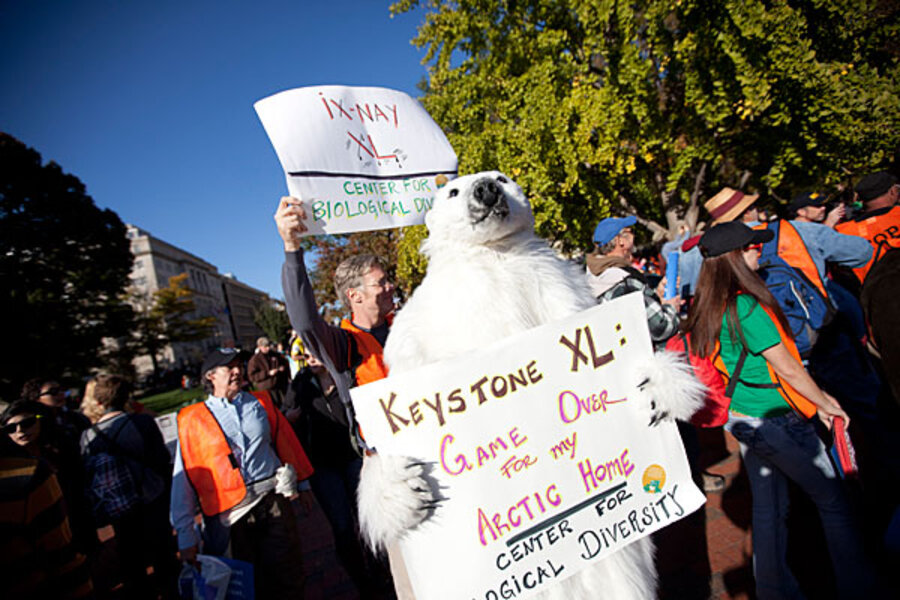Obama in March 2010 unveiled plans to boost US oil production by expanding available sites for offshore drilling along the Atlantic coast, Gulf of Mexico, and Alaska. Just weeks later, in April 2010, the Deepwater Horizon disaster in the Gulf of Mexico killed 11 men and polluted wide areas of the Gulf, prompting him to backtrack on opening so many coastal areas to offshore drilling – and to require a go-slow approach on deep-water drilling permits pending upgrades in emergency capabilities, equipment, safety regulations, and inspections.
But during his State of the Union message earlier this year, he announced he would now go ahead and open more than 75 percent of potential offshore oil and gas reserves to development.
With regard to the Keystone XL oil pipeline planned from Canada to Texas, the Obama administration halted the controversial plan on Jan. 18, 2012. The White House blamed a congressional deadline that it said made it impossible to adequately assess environmental and other concerns. In March, Obama approved the southern half of the pipeline.
Romney proposes cutting federal permitting hurdles and giving states major authority over energy development – essentially allowing the states’ weaker regulatory and permitting processes to hold sway on millions of acres of federal lands, excluding only National Parks and a few other now-restricted areas.
Doing so would vastly boost US oil and gas exploration both onshore and off, the plan contends. Romney's plan would permit drilling wherever it can be done safely, it says. This includes the Gulf of Mexico, Atlantic and Pacific Outer Continental Shelves, Western lands, the Arctic National Wildlife Refuge in Alaska, and the Alaska coast. Offshore leasing would "aggressively" open new zones off the coasts of Virginia and the Carolinas to start – and then expand.
For the Keystone XL pipeline, Romney has said he will approve it "on Day 1" of his presidency. “I also will partner closely with our neighbors. Canada and Mexico have extraordinary resources of their own that can provide secure, reliable supplies for our economy. This starts with my approval of the Keystone XL pipeline on Day 1.”








